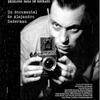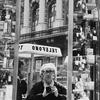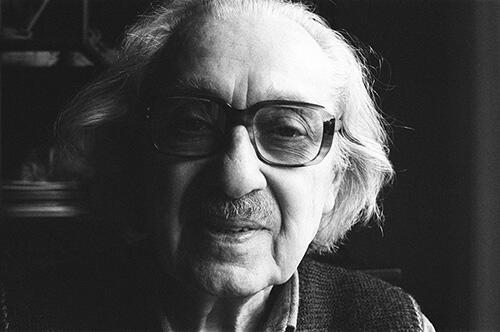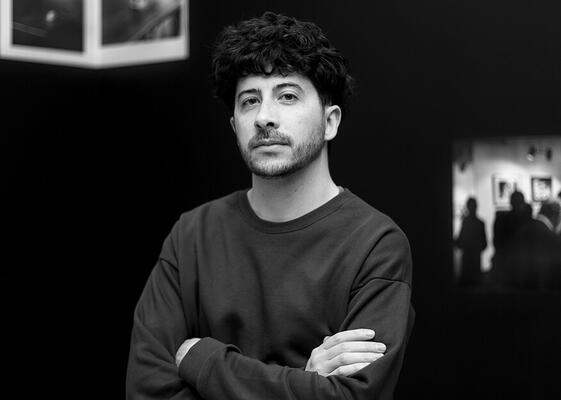Curated by: Francisco Medail
When he first set foot on the American continent, in the early days of 1926, Anatole Saderman had just turned twenty-two and carried with him a suitcase of clothes, three dollars, and a small camera he still didn’t fully know how to use. Little could that young Russian imagine that this device, suggested by his drawing teacher so he could send images from afar, would become his main life tool. Even less could he foresee that he would turn this practice into a profession, spending forty-four years of his life among cameras, backdrops, and darkrooms, and that his name would be remembered in local art history as a reference in photographic portraiture.
The social mobility that so characterized twentieth-century Argentina allowed Saderman to establish his own photography studio, not without first gaining training and work experience in Montevideo, Asunción, and Formosa. Between 1930 and 1974, with three different studio locations and a two-year break during which he and his wife traveled to Italy, Saderman devoted his life to perfecting the art of portraiture. He built a style, created his own visual grammar. His interest went beyond the most commercial demands of the genre; he moved away from poses and stereotypes, seeking something deeper. This led him to connect with other artistic fields, as he affirmed in his later years: “If I offered my studio to painters, it was because I knew they would not demand a pretty portrait, but would be able to endure themselves without a mask.”
He photographed hundreds of artists, to the point that it was said that a painter not photographed by Saderman lacked a face. However, he made psychological portraiture his métier not only with humans. In 1935, when botanist Ilse von Rentzell invited him to illustrate her book Maravillas de nuestras plantas indígenas, Saderman brought the flowers and branches into his studio and photographed them the same way he did people. His use of light and neutral backgrounds that emphasized contours transformed these native plants into a declaration of modernity.
His style was so unique, yet so simple. This is evident in his portraiture decalogue, where he stated that a window can be an excellent light source, or that to illuminate a face, no more than one reflector is necessary. He also asserted that one cannot be indifferent toward the subject; the craft requires losing fear, but one must never lose emotion. A portrait without emotion is not a portrait—it is just a photo: one photo in a million.
Anatole Saderman was born in Moscow in 1904. In 1918, his family emigrated and settled in Berlin, where Anatole studied Slavic philology, art history, and drawing. Pressured by the economic crisis, they left Europe for South America. When embarking, his father gave him his first camera. In 1926, Anatole settled in Montevideo, where he met Nicolás Yarovoff, a Russian photographer who became his mentor. A few years later, he reunited with his family in Asunción, where he opened his first studio: Foto Electra.
In 1932, he permanently moved to Buenos Aires. In 1934, he opened his studio on Callao Street. He illustrated Maravillas de nuestras plantas indígenas and held his first solo exhibition at Amigos del Arte. He became connected with local artists and intellectuals and affirmed his focus on portraiture. In 1937, he participated in the International Salon of the Foto Club Argentino, and a year later he presented the exhibition Portraits of Argentine Visual Artists at the Sociedad Estímulo de Bellas Artes.
He was a founding member of the Association of Professional Photographers and was part of the Argentine Photo Club and the Buenos Aires Photo Club. In the 1950s, he participated in the Carpeta de los Diez (Portfolio of the Ten).
In 1960, the Fondo Nacional de las Artes acquired about 300 portraits of Argentine artists by Saderman for its collection, and in 1961 he held his first retrospective exhibition. He moved to Rome for two years, where he photographed urban landscapes. He incorporated the 35mm camera and exhibited his portraits of Italian visual artists and intellectuals at the Galleria La Nuova Pesa in Rome.
In 1966, he reopened his studio in Buenos Aires on San Martín Street. He held several exhibitions in Argentina and participated in the International Salon of Photography in Singapore. In 1974, he settled in Santiago del Estero and published the book Portraits and Self-Portraits. In the 1980s, he exhibited in Barcelona and Valencia. He was named "Honorary Member" of the Foto Club Buenos Aires and received the "Diploma al Mérito" in photography from the Konex Foundation. He passed away in Buenos Aires in November 1993, just a few months shy of his 90th birthday.
Francisco Medail (Entre Ríos, 1991) is an artist and curator specialized in photography. He holds a degree in Cultural Management (UNDAV) and is a candidate for a master's degree in Argentine and Latin American Art History (UNSAM). He has had solo exhibitions in museums and galleries in Argentina and artistic residencies in Paris (Cité Internationale des Arts, 2018) and Sao Paulo (Fonte, 2018). His work is part of public and private collections, including the National Museum of Fine Arts, the Emilio Caraffa Provincial Museum, the Larivière Foundation and the Getty Research Institute. Between 2015 and 2020 he was artistic director of the BAphoto art fair. He currently directs Pretéritos Imperfectos, a collection of theoretical books on Argentine photography, and serves as curator at the Centro Cultural Kirchner. He lives and works in Buenos Aires, his work is represented by Rolf Art gallery.








